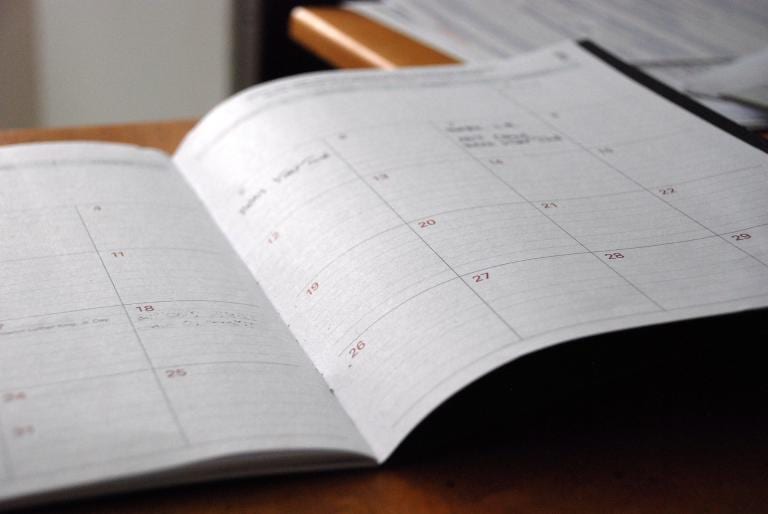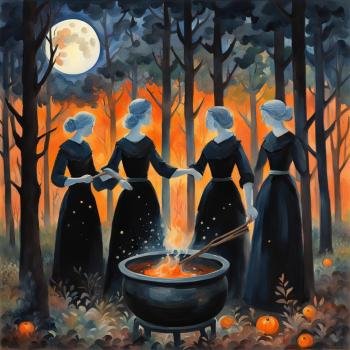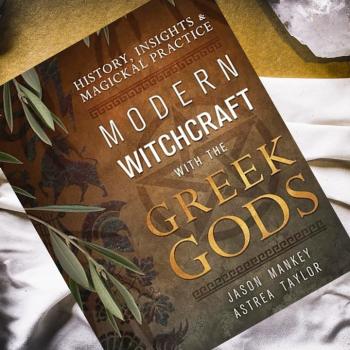. . . why both are an important part of successful witchcraft.
Whether keeping a BOS, a journal, or both, the key to success lies in developing a consistent practice of recording information in a manageable way. If there is one thing I see witches at all levels and experience struggling with, it’s finding that system that is perfect for them, and perfectly manageable—myself included.

First, let me make a clarification regarding a witch’s Book of Shadows (BOS) and Grimoire, because I often see the two referenced interchangeably; however, they are not the same thing exactly. Traditionally, a Grimoire is a comprehensive record of magical workings, including exhaustive lists of correspondences on the properties of plants, minerals, colors, days and times, planets, elements, tools and their uses. You will find detailed instructions for performing rites, rituals, casting spells, invoking deity and spirits, and more in a Grimoire.
A Book of Shadows is a more personal recording of a witch’s journey in the craft, generally not written for others to read unless it’s intended to be a legacy, an artifact passed down to future generations. Many modern witches also keep an introspective journal as a record of their personal development as a witch. These journals can be included in the BOS or kept separately.
When I worked in the publishing industry, my niche was helping memoirists turn their diaries into books for publication. I greatly admired those who had written volumes of journals over many years, each diary an identical leather-bound day book, with the year lettered on the spine, and all of the pages filled with the same identifiable cursive in the same color ink. I noticed that these journalists shared a few common practices—brevity, formulaic entries, and writing something every day, even on uneventful days.
While keeping your witch’s journal and writing a memoir are not quite the same thing, those same, key strategies can work for keeping a daily record of your practice and growth as a witch.

Keep it Short and Simple
I’m a busy witch; most of us are. There isn’t always time for making formal entries in a journal or BOS. I know how I make a potion, elixir or essence, I know the steps for casting a spell, consecrating a space or object, I don’t have to write that every time. When I’m doing witchy work, I jot brief details in my daily journal, including a list of ingredients or items I’m using, what I’m making or spelling for, and the desired results, such as healing, financial gain, protection, love, etc. Here’s an example:
Calming Elixir: Rose, Peony, Lilac (my garden)
Oil infusion (soybean)
Massage or in bath.
Remedy for rescue?
These were the flowers surrounding my childhood home. When their scent fills my gardens now, it stirs those memories and brings me comfort, a feeling of being loved and cared for. I’m curious if an oil infusion will give the same result. It’s not necessary to write all that down, my notation calls it all to mind. Journal entries like the one above take only a few moments. Later, depending on the results, I can enter all of this information into my BOS.
Follow the Blueprint
Start by entering standard information every day. The date (of course) and maybe the time of day. You might add a few words about weather conditions and astrological alignments, and also your mood. Add something that pertains to your witchy practice—pull a tarot, oracle card, or other form of divination every day and note your insights. If you meditate daily, write a few words describing the experience.
You could observe a gratitude practice, or use an app that feeds a quote, word, or affirmation of the day to reflect on. The purpose of these formulaic entries is to prompt you to write at least that much every day by minimizing the pressure of feeling you have to do more.

Write Something–Anything
You can write your journals with pen and ink, keep them electronically, or turn out pages from a vintage typewriter and put them in three-ring binders. All that matters is that you write something, no matter what, every day. It’s like lifting weights to build muscle, the more you do it the easier it is to lift the weight. When you write every day, you lessen resistance (usually the belief that you have nothing to write). In turn, a daily journal entry can prompt activities that enhance your practice, like pulling a tarot card every day—even if it’s just to have something to write about.
Building a practice of regular journaling will improve your witchcraft. You’ll begin to notice patterns in what worked and what didn’t. Did your mood have an effect, what about the weather, time of day, sun position or moon phase? Does it make a difference where you source your spell ingredients? Are fresh herbs better than dried? Also, your more personal, introspective thoughts will begin to reveal patterns of belief that play into your practice.
Getting Started
When I created my first BOS, I envisioned a meticulously organized, beautifully hand-lettered and illuminated BOS and journal all in one. That lasted about as long as it took to find the perfect blank journal, alter the cover, and then criticize myself with judgements about messy writing and inability to organize the information into categories. My high expectations defeated me; I rarely made entries for fear of “ruining” the aesthetic.
I kept looking for that perfect and perfectly manageable system that would work for me. I tried several witch-themed calendars and date books, Day Runners®, the Passion Planner, bullet journaling, a plain loose-leaf binder, and keeping my journal and BOS on my computer. In the end, I decided on a system of keeping three written volumes.
Book of Shadows
I think of my BOS as part recipe book and part scrapbook, a record of my practical witchcraft. It contains spells cast and rituals performed, invocations and devotions, and other information important to my practice, most of it worked out first in my daily journal. When I copy to my BOS, I add the extraneous thoughts and reasoning, including why I chose ingredients or specific actions, what I hoped to achieve, and of course the results. For example:
Heartsease ~ for healing heartbreak
Rose ~ for compassion from the feminine divine
Dried flowers of each in a small sachet.
Chant three times, “Petal of flowers grant your magick, release the pain of feeling heartsick.”
Direct energy in a widdershins circle over the sachet three times. “By three times three, so it is said, so may it be.”
Tuck under pillow or keep near heart.
For activating the magick, I only include details that aren’t standard in all similar workings. If I light a candle simply because I always light one when charging a talisman, I’m not going mention that. If I choose a specific color, or dress the candle to aid in the magick, then I will note that detail.
The only organization of my BOS is by date. It doesn’t include sections with long lists of correspondences. I have reference books for that, and can research online if necessary. I do note when my intuition or experience with correspondences differs from what I find in research. Always remember, the first witches did not have all that information at hand, they worked with their own intuition, observation and experience; doing the same will enhance your magick.
Along with recording spells and magickal workings in my BOS, I jot down important information and inspired thoughts I want to remember. I’ve pasted in spells written on random scraps of papers. I believe the ink I wrote with and the paper I wrote on at the time of inspiration holds a great deal of the magickal energy, so I don’t bother to rewrite them.
I also paste images and text that resonate with me into my BOS, infographics, tips and hints, dates and details of seasonal observations, deities, and folk practices, most of it culled from many years of purchased datebooks and calendars, or printed from online sources.

Calendar
I prefer a notebook-style calendar with pages for the months and weeks. Each month is a two-page spread with large squares for every day, where I jot down appointments and reminders for both mundane and magickal life. I sometimes paperclip an additional page, or tape a fold-in—a to-do list, for example. Putting my tasks in front of my eyes every day works much better for me than having a separate list in another location.
The daily pages, usually seven days on two pages, are reserved strictly for my magical life, and where I make those brief entries that begin with the same information every day.
Journal
Over the years, I’ve settled on a simple composition-style notebook for my journaling. It’s for the days that I have more to say than will fit in the weekly calendar, and anything goes—magickal or mundane. I use it to brainstorm ideas and flesh out insights, delve into intuition, dreams and divination, work through conflicting thoughts, and write letters (to the living and the dead, the real and imaginary). I keep research notes, I draw sigils and random doodles, and I embellish pages with stickers and collage.
I bind these two books together, using heavy duty, clear packing tape to secure the notebook calendar inside the front cover of the journal. It’s not necessary, of course, but convenient for me.
My system of recording my witch’s journey is personal and quite unique to me, as yours will be to you. If you’ve struggled to find a simple but effective system for you, keep looking. Your magic will be better for it.
Find more insights on the benefit of keeping a journal in Heron Michelle’s, A Witch’s Book of Mirrors: Reflections to Build Critical Thinking Skills.
Read more Simple Witchery, and find upcoming courses at simplewitchery.com
Follow Simple Witchery on Facebook and check out my witchy feeds as the MADGoddess on Instagram and Pinterest


















